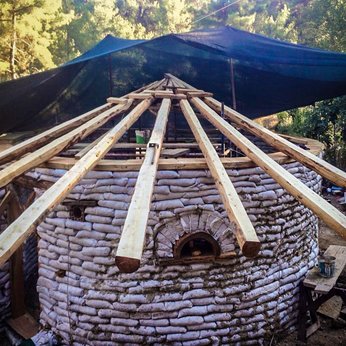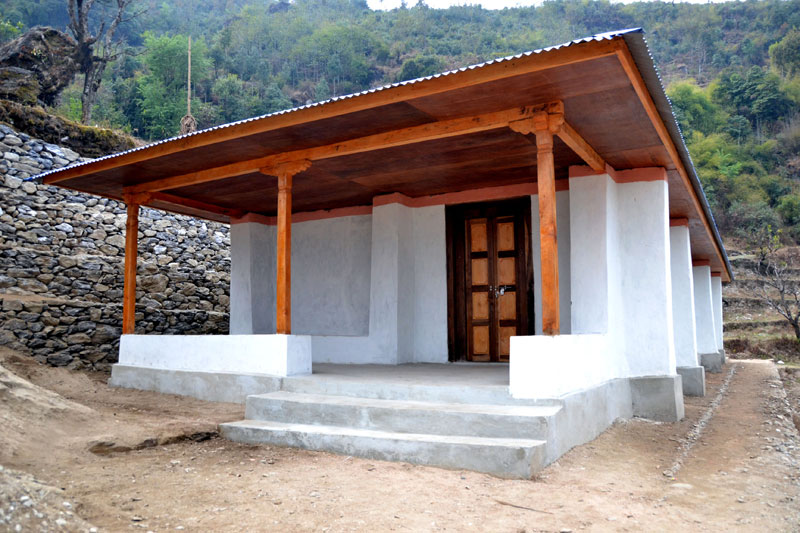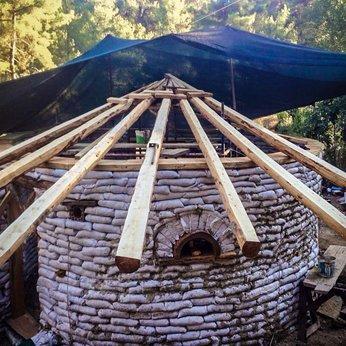Earthbag construction is a natural building technique that uses bags filled with soil as a primary building material. Earthbag homes are commonly built on foundations, but can also be built on slabs, in trenches or on stilts.
Although the cost of earthbag construction varies widely, it’s generally an affordable alternative to conventional building methods. The main costs associated with earthbag construction are the bags themselves and filling them with dirt.
The best way to determine the cost of your earthbag home will be to consult with a contractor who specializes in this type of construction. However, if you’re not sure where to start, here are some general guidelines:
Average Costs for Earthbag Homes:

Average costs for an earth bag house can range from $10 per sq ft to $50 per sq ft depending on what part of the country you live in and what materials you use. In areas where labor is cheap, such as Mexico or Central America, you can expect to pay less than $10 per sq ft for labor only (excluding materials). If you hire someone who does not specialize in this type of construction then expect your cost per sq ft to go up dramatically!
Cost to build earthbag home
If you want to build an earthbag home, you’re in luck. There are several companies that sell pre-made bags of sand, clay and aggregates. The cost will vary depending on how much material you need and what type of material it is.
Earthbag Homes offers different size bags for sale and they range from $1.50 to $3 per bag. They also offer a bag kit that comes with instructions, bags, staples and other materials needed to build an earthbag house for $425 plus shipping fees.
If you have access to the materials yourself or if you just want to save money by using them instead of buying pre-made bags, Earthbag House Plans has detailed instructions on how to build your own sandbags.
Earthbag Building: An Introduction
Earthbags are bags of soil, sometimes filled with sand or gravel, that can be used to build the walls for a house. The bags are stacked and held together with barbed wire or rebar running through them. The walls can be built at any desired height, but typically they range from one to three feet tall. Earthbag building has been popular since the 1970s and is still gaining popularity today because it’s so inexpensive and easy to do. The walls can be built as thick as needed to provide insulation and strength so that they can withstand high winds and earthquakes.
History of Earthbag Building
Earthships were first designed by architect Michael Reynolds in the late 1970s as an affordable way for people to live off the grid. They’re made of recycled materials like tires, cans, bottles, glass bottles and other items found in landfills. In addition to being affordable, earthships use solar energy as well as passive heating methods such as using thermal mass — materials that hold heat — such as rock walls or water tanks filled with water heated by the sun during the day then providing warmth at night when it cools down in temperature.
Sandbagging Basics
If you’re interested in building your own home with earthbags
The cost of building an earthbag home can vary greatly depending on the size of the home, how much work is done by a builder and what materials are used.
Earthbag construction is a very low-cost alternative to conventional brick and mortar construction. In the United States, an earthbag home may cost $50/square foot or less to build when using local materials and labor. In other parts of the world where these materials are not readily available, the cost per square foot could be as high as $500/square foot or more.
In this article we’ll discuss some basic costs associated with building an earthbag home using locally sourced materials:
Costs for sandbags: Sandbags are typically made from polypropylene plastic and are filled with soil to make them sturdy enough to withstand pressure. The bags should remain waterproof after being filled with sand so that they do not leak during construction. The cost of a single sandbag varies considerably depending on its size and whether it is custom-made or purchased off-the-shelf in bulk quantities (e.g., at Home Depot). For example, you might pay anywhere from $0.10-$0.50 per bag if you buy them in bulk quantities or $1-$3 each if you purchase
Earthbag construction is an inexpensive, sustainable and highly durable building technique that has been used since the dawn of man. It allows for the use of local materials, so it’s a great choice for homes built in remote locations or areas with limited access to building materials.
Earthbag construction is also a very low-tech/low-cost way to build a house. It can be done by people who have never built anything before, and it doesn’t require any special skills or tools to complete successfully.
The main cost will be in time spent working on the project; however, this can be greatly reduced by hiring someone with experience to oversee construction and make sure everything gets done right. Other than that, you only need some basic tools like shovels and wheelbarrows to get started!
The cost to build an earthbag home will depend on several factors. The size of your project, the complexity of your design and the materials used are all important factors.
Earthbag homes are constructed from sandbags filled with soil. Sandbags can be purchased from most hardware stores or you can purchase them online. Using this method, you can build a simple house for around $5 per square foot or a more elaborate home for around $10 per square foot.
If you’re interested in building an earthbag home on your own, there are several things that you should consider:
1) How many people will live in the house?
2) Do you want to include a garage?
3) What type of roof will you use?
4) What type of foundation do you want?
